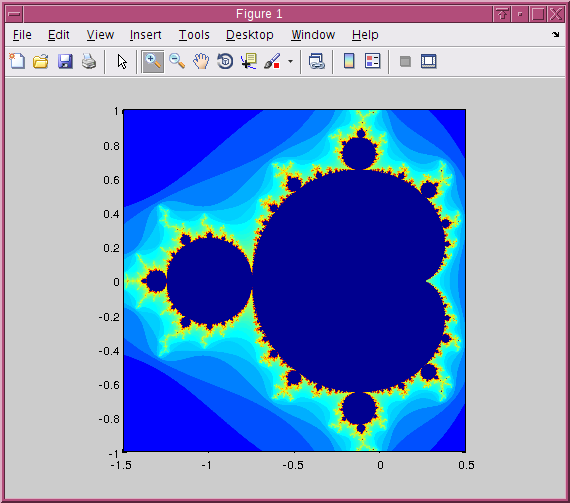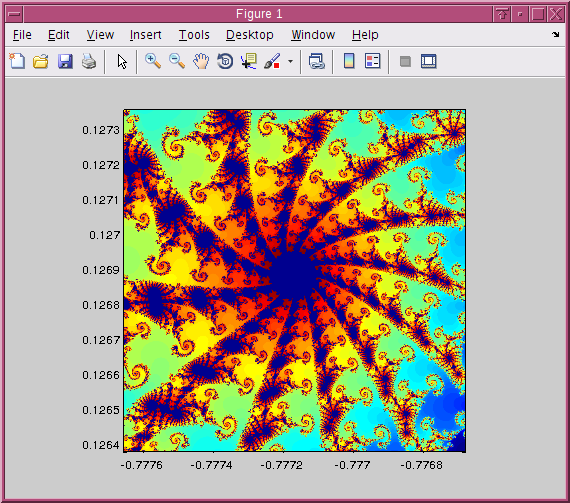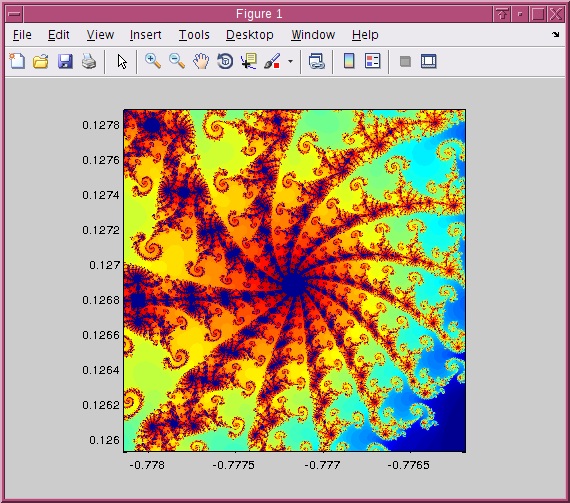Just for fun I made a couple fractals with Matlab.
The Mandelbrot set is calculated with following equation:
$$ z_n = z_{n-1}^2 + p $$
with the initial condition \(z_0 = 0\). The point \( p \) is any arbitrary point in the complex plane. The Mandelbrot set is the set of all points \( p \), for which the magnitude
$$ \left| \lim\limits_{n\rightarrow\infty} z_n \right| < \infty $$
which simply means that the magnitude is bounded.
To calculate a Mandelbrot set, just select any point \(p \) and then check whether \( \left| z_n \right| \) remains bounded for increasing \( n \). To do so, simply try different \( n \) values in a loop. If the magnitude remains bounded, paint the corresponding point black, otherwise paint it white. Do this for all points on the complex plane, and you have the Mandelbrot set 🙂 using Matlab, one can do that and will have following result:
OK we kind of expected this result. But just black and white is a bit boring. Further it is sort of unsatisfactory to check the magnitude of \( z_n \) for a lot of values for \( n \); this seems like a steamroller tactics 😉 But with the aid of the triangle inequality one can show that the series diverges as soon as one of its elements has a magnitude of greater than 2. So, to calculate the Mandelbrot set, we can calculate \( \left| z_n \right| \) for a (much lower) number of \( n \)s and check whether it becomes greater than 2. If this does not happen, the point belongs to the Mandelbrot set and we paint it black; if it does not belong to the Mandelbrot set, we paint this point with a color depending on how many iteration steps we needed to find out that \( z_n \) diverges. Following Matlab/Octave code does this for us:
resx = 1000;
resy = 1000;
xmin = -1.5;
xmax = 0.5;
ymin = -1;
ymax = 1;
x = linspace(xmin, xmax, resx);
y = linspace(ymin, ymax, resy);
mandel = zeros(resx, resy);
for xx = 1:resx
for yy = 1:resy
p = x(xx) + 1i*y(yy);
z = 0;
for k = 1:100
if abs(z) > 2
mandel(yy, xx) = k;
break;
end
z = z^2 + p;
end
end
end
figure(1);
pcolor(x, y, mandel);
shading interp
axis([xmin xmax ymin ymax])
axis squareUsint that code, I generated the following pics.


